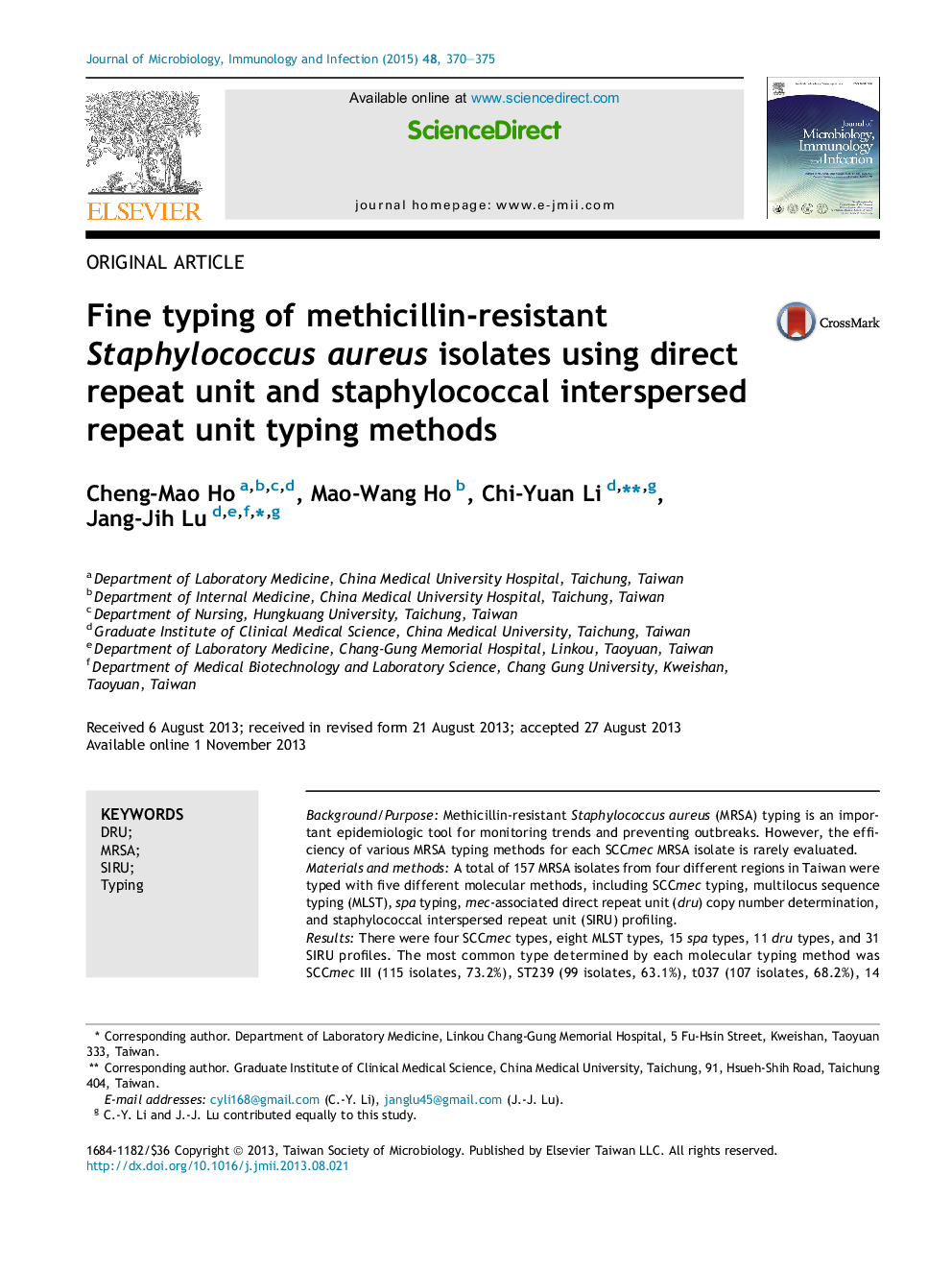| Article ID | Journal | Published Year | Pages | File Type |
|---|---|---|---|---|
| 3377902 | Journal of Microbiology, Immunology and Infection | 2015 | 6 Pages |
Background/PurposeMethicillin-resistant Staphylococcus aureus (MRSA) typing is an important epidemiologic tool for monitoring trends and preventing outbreaks. However, the efficiency of various MRSA typing methods for each SCCmec MRSA isolate is rarely evaluated.Materials and methodsA total of 157 MRSA isolates from four different regions in Taiwan were typed with five different molecular methods, including SCCmec typing, multilocus sequence typing (MLST), spa typing, mec-associated direct repeat unit (dru) copy number determination, and staphylococcal interspersed repeat unit (SIRU) profiling.ResultsThere were four SCCmec types, eight MLST types, 15 spa types, 11 dru types, and 31 SIRU profiles. The most common type determined by each molecular typing method was SCCmec III (115 isolates, 73.2%), ST239 (99 isolates, 63.1%), t037 (107 isolates, 68.2%), 14 dru copies (76 isolates, 48.4%), and SIRU profile 3013722 (102 isolates, 65%), respectively. When using the combination of MLST, spa typing, and dru copy number, ST5-t002-4 (n = 8), ST239-t037-14 (n = 68), ST59-t437-9 (n = 9), and ST59-t437-11 (n = 6) were found to be the most common types of SCCmec types II (n = 9), III (n = 115), IV (n = 21), and VT (n = 11) isolates, respectively. SCCmec type III isolates were further classified into 11 dru types. Of the 21 SCCmec type IV isolates, 14 SIRU profiles were found. Seven SIRU patterns were observed in the 11 SCCmec type VT isolates.ConclusionDifferent typing methods showed a similar Hunter–Gaston discrimination index among the 157 MRSA isolates. However, dru and SIRU typing methods had a better discriminatory power for SCCmec type III and SCCmec types IV and VT isolates, respectively, suggesting that dru and SIRU can be used to further type these isolates.
